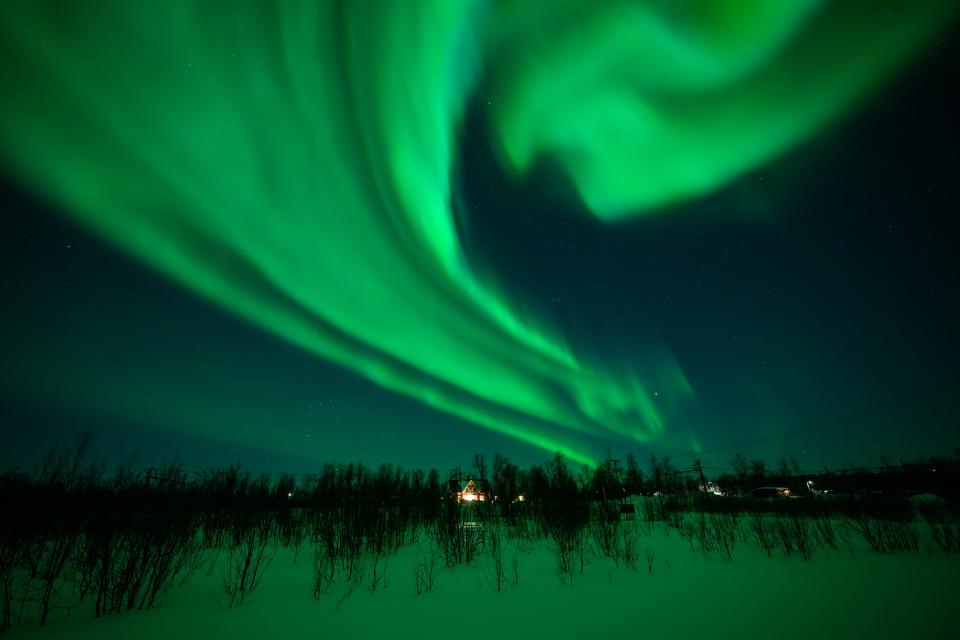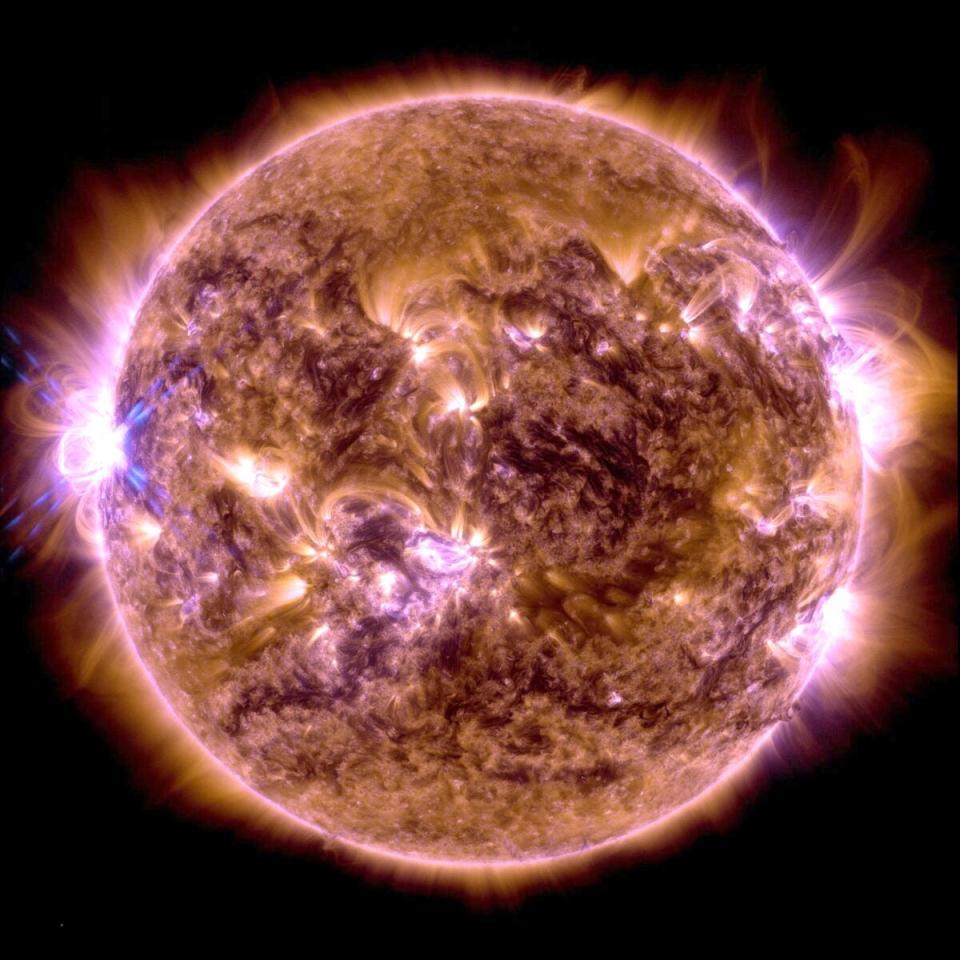When could you see the northern lights? Aurora forecast for over a dozen states this weekend
Read the latest on the northern lights this weekend: Saturday's forecast says parts of U.S. could see auroras.
A series of strong solar flares that the sun has been emitting since Wednesday morning could cause the northern lights to become visible this weekend to a wide swath of the United States.
The coronal mass ejections (CMEs) hurtling toward Earth prompted the National Oceanic and Atmospheric Administration to issue a rare Severe (G4) Geomagnetic Storm Watch on Thursday for the first time in 19 years. The geomagnetic storms that the CMEs would produce pose a limited threat to our communications, but they can also trigger the aurora borealis, better known as the northern lights.
And because the sun is at the height of its 11-year-cycle, the auroras have a very good chance of being seen by more Americans than usual.
Here's what to know about the northern lights, and when and where you may catch a glimpse of them this weekend.
Good news on northern lights: Experts predict years of awesome aurora viewing
What are the northern lights?

The auroras are a natural light display in Earth's sky that are famously best seen in high-latitude regions.
The northern lights materialize when energized particles from the sun reach Earth's upper atmosphere at speeds of up to 45 million mph, according to Space.com. Earth's magnetic field redirects the particles toward the poles through a process that produces a stunning display of rays, spirals and flickers that has fascinated humans for millennia.
Geomagnetic storm: Solar storm is powerful enough to disrupt communications: Why NOAA says not to worry
When might the northern lights be most visible?
This week's solar activity brings with it the increased possibility of seeing the aurora across the U.S.
Though the timing is uncertain and the northern lights can be a particularly fickle forecast, officials at NOAA said the coronal mass ejections could reach Earth as early as Friday evening into Saturday, Shawn Dahl, a space weather forecaster at SWPC, told reporters Friday morning during a news briefing.
Experts from NOAA said auroras could be visible into Sunday.
The best aurora is usually within an hour or two of midnight (between 10:00 p.m. and 2:00 a.m. local time). These hours expand towards evening and morning as the level of geomagnetic activity increases, according to NOAA.
Where might the northern lights be best seen in the US?
The northern half of the U.S. is forecasted to be in the view path where the auroras may be most visible.
The best chances appear to be in northern Montana, Minnesota, Wisconsin and the majority of North Dakota, according to SWPC's experimental Aurora viewline. The visibility for viewing will also depend on local weather conditions and city lights.
Experts at NOAA said the northern lights may even be visible as far south as Alabama and Northern California. If all else fails, experts even recommend taking a photo of the night sky with your cell phone – you never known what you may capture.
"Things that the human eye can't see, your phone can, so it'll be interesting to see just how far south we're getting aurora images this time," said Brent Gordon, Chief of Space Weather Services Branch for SWPC, on the Friday call with reporters.
The National Weather Service on Friday shared an aurora forecast for Friday night and early Saturday morning, showing more than a dozen states with at least a chance to see the lights.
The Space Weather Prediction Center (@NWSSWPC) has issued the first G4 (Severe) geomagnetic watch since 2005. The aurora tonight/tomorrow morning may become visible over much of the northern half of the country, and maybe as far south as Alabama to northern California.
Story:… pic.twitter.com/bqgd9qqnNI— National Weather Service (@NWS) May 10, 2024
How does the solar maximum influence the northern lights?
Explosive bursts of radiation known as solar flares and coronal mass ejections (eruptions of solar material) drive the geometric storms, releasing solar particles and electromagnetic radiation toward our planet.
As the frequency of coronal mass ejections increases at the height of its 11-year cycle, which NASA said is expected to be in 2025, electromagnetic activity on the sun peaks. What that so-called "solar maximum" means for us is that the risk increases for disruption to satellite signals, radio communications, internet and electrical power grids.
'God's Hand' revealed in cosmos: Telescope images reveal 'cloudy, ominous structure' known as 'God's Hand' in Milky Way

Last December, a powerful burst of energy created the largest solar flare that NASA had detected since 2017.
The last G4 level solar storm hit Earth in March, one of only three storms of that severity observed since 2019, according to NOAA's Space Weather Prediction Center.
Just like in March, the upcoming solar storm will have particles flowing from the sun that get caught up in Earth's magnetic field, causing colorful auroras to form as they interact with molecules of atmospheric gases. The resulting glowing green and reddish colors of the aurora may be quite a sight to see.
Contributing: Doyle Rice, USA TODAY
Eric Lagatta covers breaking and trending news for USA TODAY. Reach him at [email protected]
This article originally appeared on USA TODAY: When might you see aurora borealis? Northern lights forecast for US
